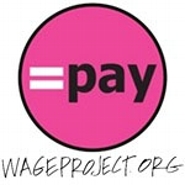
Over the course of a lifetime, wage differences between men and women for the same work can amount to a loss of up to $1-2 million per woman. Luckily, much of this wage gap can be closed if women negotiate for the salary that they deserve. On April 27, Hamilton College hosted its first WAGE Project workshop with coach Annie Houle. The program taught Hamilton women the ins and outs of salary negotiation, from general facts to pinpointed strategies. The workshop was funded by the Career Center and the Kirkland Endowment.
On average, women earn 77 cents to every dollar that men earn for the same work. For African-American women, this figure goes down to 69 cents to every dollar, and Latina women suffer even more from the wage gap at 57 cents to the dollar. In the first year of employment, a typical woman will earn 80 percent of what her male counterparts earn, but this gap tends to worsen with time because future wages depend on past salaries, and so the wage differential is compounded over the course of a career.
Houle started her lecture by asking attendees what they would do with the extra $1-2 million that they could earn during their working lives if they work to close this gap. The responses ranged from purchasing real estate to investing to buying a high-end piano, but the overall message was clear: this extra amount of money would help women reach their goals and enrich their lives. Houle explained that while these goals are wonderful, women need to have the wherewithal and perseverance to achieve them.
It was this positive, hopeful attitude that echoed throughout the entire program. Instead of dwelling on discouraging facts and figures, Houle stressed that women have the power to negotiate for what they deserve in the workplace. Men are often much less timid about entering these types of negotiations, and it pays off for them in the long run in the form of higher salaries. The key to balancing this inequality, according to Houle, is to start early.
Any employee’s first job can set the tone for what he or she will be paid in a lifetime. This is why Houle’s lecture came at an appropriate time, before these Hamilton women negotiate their first salary. In order to start negotiations, Houle recommends “benchmarking” the appropriate salary for one’s position and creating a realistic budget of expenses.
These two steps are like opposite sides of the same coin; effective budgeting allows employees to know exactly how much they need in order to stay out of debt and plan for the future. No woman should accept a salary on which she cannot make a living. Together participants developed a budget for a single woman in New York City, including all living expenses, in order to figure out the minimum that a woman should accept.
Benchmarking, on the other hand, has more to do with an employer’s needs and how much employers in the field generally pay for a given position. Houle recommends benchmarking one’s salary via WAGE Project’s website, which targets a given position based on location and years of experience. This information is extremely valuable to the negotiator because it gives her leverage. If she is being offered less than what she is worth, based on current figures, she can use that to her advantage to drive up the offer.
Once these initial steps are completed, Houle gave more specific advice on how to enter into negotiations. The first step, she advises, is to wait for an initial offer against which to anchor one’s counteroffer. Next, Houle stresses that the employee must keep in mind her strengths and “what she brings to the table.” This step is especially important because an employee is more likely to be successful in negotiations if she stresses the employer’s needs rather than her own.
No negotiation is ever failsafe, but the worst that can happen is a supervisor will decline to negotiate. It is crucial to remember that, once an initial offer is made, it is extremely unlikely to be retracted based on a request to negotiate because the company has already settled on that individual. This gives the employee leverage, provided that she sees her own worth as it applies to that particular company.
The group practiced how to market one’s best talents via a case study in which group members discussed what a particular candidate might use as bargaining chips in a negotiation. Later, the group split up into pairs to role-play this same scenario.
Finally, Houle gave specific pointers about tactics and tips in a salary negotiation. These included using a calm, persuasive tone and remaining flexible about what can be negotiated. For example, Houle encourages employees to keep in mind that additional factors such as benefits, perks and job titles all contribute to the job’s overall worth. Furthermore, employees should remain professional and always focus on the employer’s needs over her own.
The wage gap is a problem that affects not only women, but families and communities as a whole. The more information women have about their own bargaining power, the closer they come to being paid what they are really worth to their employer. Houle’s lecture showed students how to start early to get on the right path, bringing society one step closer to bridging the wage gap for good.
According to its website, the WAGE Project, Inc is "a 501(c)3 charitable, tax-deductible organization established for one purpose: to end discrimination against women in the American workplace in the near future. To do that, WAGE inspires and helps working women to take the steps needed so that every woman is paid what she’s worth."
Posted April 29, 2013
